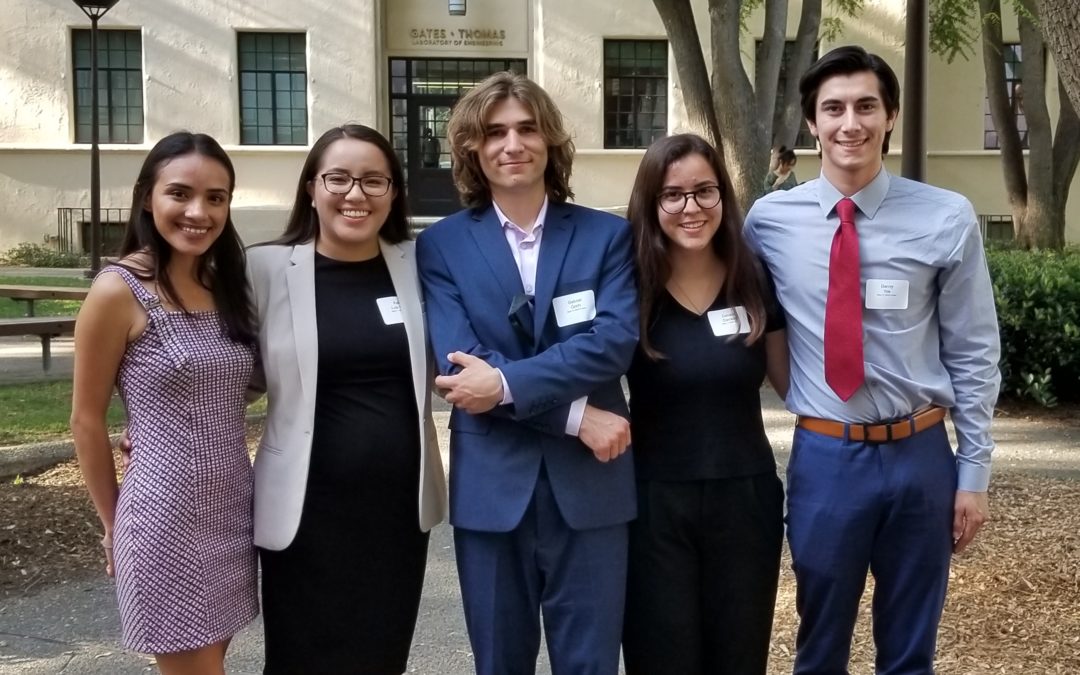The Base 11 Summer Fellowship of 2019 has just concluded, which means a whole new cohort of aspiring STEM leaders are now equipped with the valuable hands-on experience that will transform them into the talented STEM workforce of tomorrow. With over 500 applicants and a limited number of open spots, it is no surprise that the selected few went above and beyond their scope of duties and are now members of the Victory Circle. Read on to learn more about the exciting projects they worked on!
Caltech Aerospace Mentorship Program
This year’s AMP fellows worked on a variety of impactful projects in aerospace. Each student worked under the guidance of graduate and faculty mentors as integral team members, where they defined their objectives, conducted the research, and implemented what they learned into the greater project.
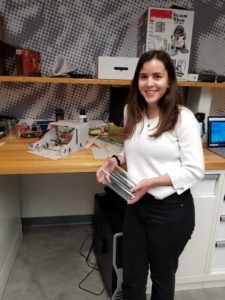
Caltech Fellow Daniela Davalos poses with the autonomous underwater robot she worked with over the summer.
Although aerospace-related, these projects also have more “down-to-earth” applications as well. One example of this is Santa Monica College’s Gabriel Goch’s work on autonomous vehicles, aka self-driving cars. Following in the trend of autonomous systems, Daniela Davalos, also from Santa Monica College, worked on creating a simulation of an underwater autonomous vehicle. Because of Daniela’s work, it can now be tested safely and efficiently using mathematical models to simulate the behavior of the vehicle, testing any and all what-if scenarios without actually putting the vehicle at risk.
Other projects had students designing and 3D printing parts for flight. Chabot College’s Katia Luis-Diaz investigated the thrust efficiency of coaxial propellers for use in small drones, and eventually came to a design that made flying more efficient. Similarly, Orange Coast College’s Daniel Yos spent his fellowship improving the descent performance of small-scale rotorcraft through added geometries. Irvine Valley College’s Valeria Villa also spent a lot of time 3D printing, but her objective was to study the high strain rate compressive behavior of 3D-printed aluminum.
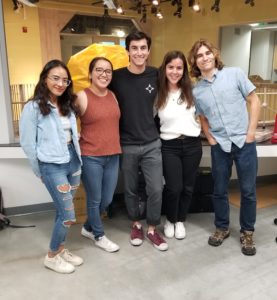
The Summer 2019 Caltech Cohort.
Although each fellow’s projects varied widely in its technical nature, there was a definitely a shared sentiment when it came to the overall impact they got from the experience.
“I was able to appreciate what real research means and its environment. I learned about sources of funding, the different positions and paths in higher education. It seems attainable and interesting,” said Gabriel.
“This experience showed me the importance of collaboration and hard work to achieve something meaningful in the scientific sector. Through this, I learned that I want to conduct research at the graduate and Ph.D. level and be part of this type of work I admire so much,” said Valeria.
UCI Autonomous Systems Engineering Academy
Under the guidance of UCI’s Ernest Garrison, students spent five weeks designing, building, programming, and flying their very own autonomous drones. In the process, they learned the fundamentals of aerospace design, computer-aided design, 3D printing, basic electronics, and fabrication techniques.
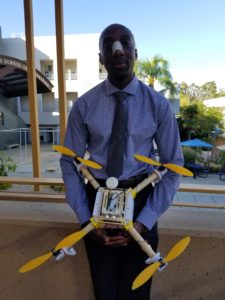
Michael Allotey poses with his autonomous drone.
“Because of the internship I can see more opportunities in my career and university choice because of my new skills. I can also use these skills in my own projects and can become a better engineer,” said Orange Coast College’s Rachel Devlin.
“The opportunities that I see for myself now are being able to apply for internships at big or small engineering companies because of the many skills that I learned during the Base 11 internship. My family, especially my dad, is very proud that I have finally begun to immerse myself in a professional working environment for the engineering industry,” said Orange Coast College’s Vicente Presilla.
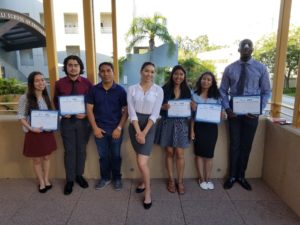
The Summer 2019 UCI cohort.
“I gained the confidence to work with machines like laser cutters, 3d printers, bandsaws, and drill press. I learned this in such a short amount of time and I am not intimidated anymore to work in engineering because of these skills. Also, I gained a great team working experience that I am so appreciative towards. Most importantly though I gained so many professional relationships, networking connections, and friendships. With that, I learned about everyone difference experiences and I gained lots of advice I will take with me to my pathway to higher education.” said Moreno Valley College’s Brenda Evaristo.
USC Liquid Propulsion Lab
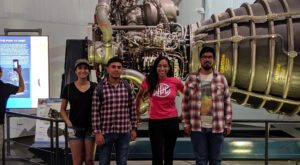
The Summer 2019 USC cohort.
This year’s USC Fellows got to test and launch a unique rocket system using engines developed locally at the university. Some of the things the students got to do included participating in ground test fires, procedures development, design trade studies, data acquisition system development and evaluation, and hands-on work in mechanical and electrical systems. This year’s participants were Compton College’s Horacio Iturriaga, LA City College’s Nallely Lopez, Mt. San Antonio College’s Dante Tejada, and Santa Monica College’s Natasha Turner.
“The most significant lesson I learned during my time at LPL is to not be afraid to ask questions and to be brave enough to seek help when necessary. I had the privilege to work with other motivated students and together we successfully completed our projects and learned a lot along the way,” said Nallely.
Smithsonian Institute at the National Air and Space Museum
Fellows Ariana Hernandez and Alexis Diaz gained exposure to experts in the field as they work on preserving, restoring, cleaning and caring for historic artifacts and engines at the National Air and Space Museum. They got to work in a hands-on environment by assisting in the cleaning and preservation of historic artifacts and engines while conducting preliminary research on artifact history and materials.
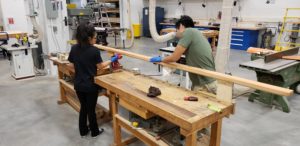
Ariana Hernandez works on restoring artifacts in the National Air and Space Museum.
Santa Monica College’s Ixchal Gonzalez spent her time working in the Center for Earth and Planetary Studies, collecting and manipulating digital elevation models of Mars for use with a landscape evolution model, mapping relatively young water-carved features on Mars, and mapping Venus from Earth-based radar data.
To learn more about the Base 11 Summer Fellowship Program, click here.

